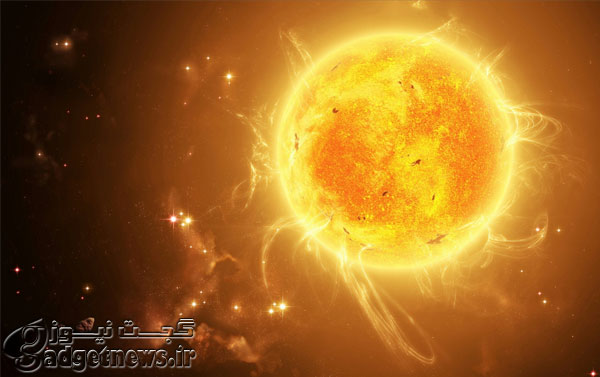
ستاره شناسان دانشگاه تگزاس در آستین توانستهاند اولین خواهر خورشید را شناسایی کنند که تقریبا از همان ابر گاز و غبار مادر خورشید زائیده شده است. روشهای ایوان رامیرز، ستاره شناس دانشگاه آستین و تیمش به دیگر منجمان در شناسایی خواهران دیگر خورشید کمک خواهد کرد. این کار میتواند به درک بهتر از چگونگی و محل شکلگیری خورشید و چگونگی قابل سکونت شدن منظومه شمسی منجر شود.
به گفته رامیرز، شانس کوچکی وجود دارد که این ستارگان خواهر خورشید میزبان سیاراتی باشند که قابل سکونت هستند. در روزهایی ابتدایی در خوشه محل تولدشان، انفجارها میتوانند باعث ایجاد سیارات شوند و این قطعات متلاشی شده میتوانند در سیستمهای ستارهای حرکت کرده و حتی شاید مسئول انتقال حیات اولیه به زمین باشند.حتی ممکن است قطعات زمین باعث انتقال حیات به سیارات اطراف خواهران خورشید شده باشند.
خواهر خورشید «HD 162826» نام دارد که 15 درصد بزرگتر از خورشید است و در فاصله 110 سال نوری در صورتفلکی هرکول یا زانوزده قرار دارد.محققان این ستاره را با پیگیری 30 کاندید ممکن که توسط گروههای مختلف در اطراف جهان به منظور شناسایی خواهران خورشید کشف شده بودند، معرفی کردهاند.
تیم رامیرز با تلسکوپ هارلان اسمیت در رصدخانه مکدونالد به بررسی عمیق 23 کاندید ستارهای و با تلسکوپ کلی ماژلان در رصدخانه لاسکامپاناس به مشاهده سایر ستارهها در نیمکره جنوبی پرداختند.همه این رصدها از طیفسنجی با وضوح بالا برای دستیابی به درک عمیق از مواد شیمایی سازنده ستارگان استفاده کردند.
نتایج این پژوهش در مجله Astrophysical منتشر شده است.
منبع : techtimes
The star in question is called HD 162826. It is found in the constellation Hercules and can be observed from Earth even using low power telescopes or a pair of binoculars. The star can be found by located the Vega, the brightest star in the constellation Lyra. A study on the subject will soon be published at the Astrophysics Journal.
HD 162826 is also quite similar to the Sun, albeit 15 percent more massive. Astronomers observing the star say that it is highly likely that HD 162826 was formed in the same dust cloud that also produced the Sun. The identification of a likely solar sibling may soon help scientists find other potential brother and sister stars. Moreover, the researchers hope that by studying a close relative of the Sun, their findings may also help bring to light more details about the Sun and how the solar system became suitable for life.
“We want to know where we were born,” said University of Texas astronomer Ivan Ramirez. “If we can figure out in what part of the galaxy the sun formed, we can constrain conditions on the early solar system. That could help us understand why we are here.” Ramirez is the lead author of the study.
Aside from being a potential sister star to the Sun, Ramirez and his colleagues also believe that there is a very small chance that the HD 162826 system could have planets suitable for life. While the chances may be small, the researchers are certain that the odds are not zero. The researchers believe that soon after the Sun and its siblings were born, numerous collisions between primordial planets and planetary material may have been exchanged between the newly formed star systems. This could mean that the necessary ingredients for life could have come from other star systems. Alternatively, primitive life may also have travelled from the Earth to the other planets in other sister star systems.
After looking at 30 possible solar siblings, the researchers were able to analyze 23 stars. HD 162826 was one of the 23 stars and by using high-resolution spectroscopy, the researchers were able to analyze the chemical make-up of the candidate stars. The chemical analysis showed that HD 162826 was almost certainly formed in the same stellar nursery that birthed the Sun. Due to the discovery, astronomers are gearing up to find even more solar siblings. Experts are also certain that they are out there. Stellar nurseries often give rise to hundreds of thousands of stars.
“The number of stars that we can study will increase by a factor of 10,000,” said Ramirez.
 گجت نیوز آخرین اخبار تکنولوژی، علم و خودرو
گجت نیوز آخرین اخبار تکنولوژی، علم و خودرو 





